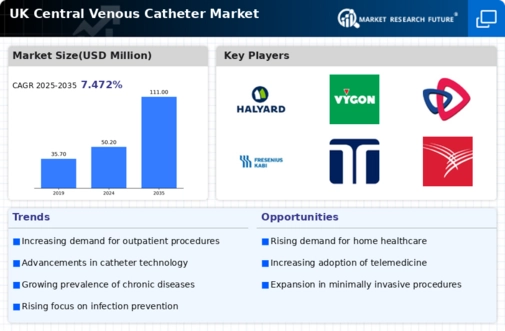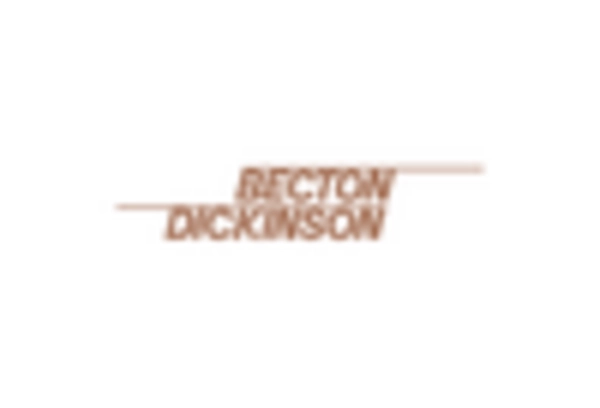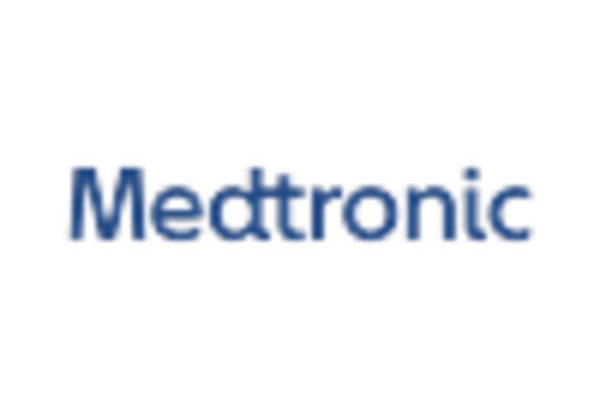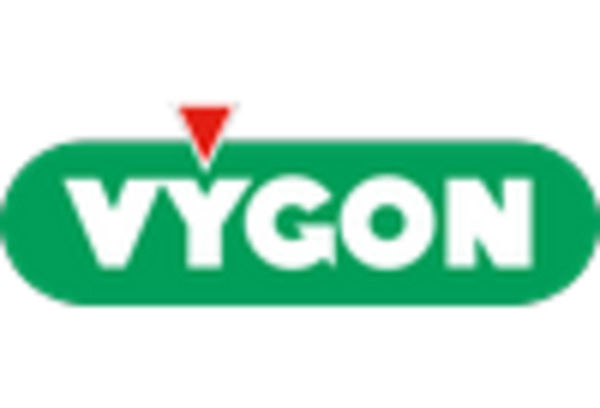Advancements in Medical Technology
Technological innovations in the medical field are significantly influencing the central venous-catheter market. The introduction of advanced catheter designs, materials, and insertion techniques enhances patient safety and comfort. For instance, the development of antimicrobial-coated catheters has been shown to reduce infection rates, a critical concern in catheter use. Additionally, the integration of imaging technologies during catheter placement improves accuracy and reduces complications. The UK healthcare system is increasingly adopting these advanced technologies, which may lead to a projected market growth of around 15% over the next five years. As hospitals and clinics prioritize patient outcomes, the demand for technologically advanced central venous catheters is likely to rise, driving the market forward.
Expansion of Home Healthcare Services
The expansion of home healthcare services in the UK is emerging as a significant driver for the central venous-catheter market. With an increasing number of patients receiving treatment at home, there is a growing need for reliable intravenous access solutions. This trend is particularly relevant for patients requiring long-term therapies, such as those with chronic illnesses or post-operative care. The convenience and comfort of home healthcare are appealing to patients and healthcare providers alike, leading to a projected increase in the use of central venous catheters in home settings. As the home healthcare market continues to grow, the central venous-catheter market is likely to benefit from this shift, with an anticipated growth rate of around 10% in the coming years.
Rising Awareness of Infection Control
Infection control has become a paramount concern in the UK healthcare system, significantly impacting the central venous-catheter market. The increasing awareness of hospital-acquired infections (HAIs) has led to a heightened focus on the use of safe and effective catheterization practices. Healthcare providers are now more inclined to adopt catheters that minimize infection risks, such as those with advanced antimicrobial properties. This shift in focus is likely to drive market growth, as hospitals implement stringent infection control protocols. According to health reports, HAIs affect approximately 300,000 patients annually in the UK, underscoring the need for effective solutions. As awareness continues to grow, the demand for innovative central venous catheters that enhance patient safety is expected to rise.
Increasing Prevalence of Chronic Diseases
The rising incidence of chronic diseases in the UK is a pivotal driver for the central venous-catheter market. Conditions such as cancer, diabetes, and cardiovascular diseases necessitate long-term intravenous access for treatment and management. According to recent health statistics, chronic diseases account for approximately 70% of all deaths in the UK, highlighting the urgent need for effective treatment options. This trend is likely to propel the demand for central venous catheters, as healthcare providers seek reliable solutions for patient care. Furthermore, the increasing number of patients requiring chemotherapy and long-term medication regimens further emphasizes the importance of central venous access. As the population ages and the prevalence of these diseases continues to rise, the central venous-catheter market is expected to experience substantial growth in response to these healthcare demands.
Growing Investment in Healthcare Infrastructure
The UK government is making substantial investments in healthcare infrastructure, which is a key driver for the central venous-catheter market. Recent budgets have allocated billions of £ towards upgrading hospitals and expanding healthcare facilities. This investment is aimed at improving patient care and increasing the availability of advanced medical equipment, including central venous catheters. As healthcare facilities enhance their capabilities, the demand for high-quality catheters is expected to rise. Furthermore, the establishment of specialized treatment centers for chronic diseases will likely increase the utilization of central venous catheters. This trend suggests a robust growth trajectory for the market, as healthcare providers seek to equip themselves with the necessary tools to meet patient needs effectively.

















Leave a Comment